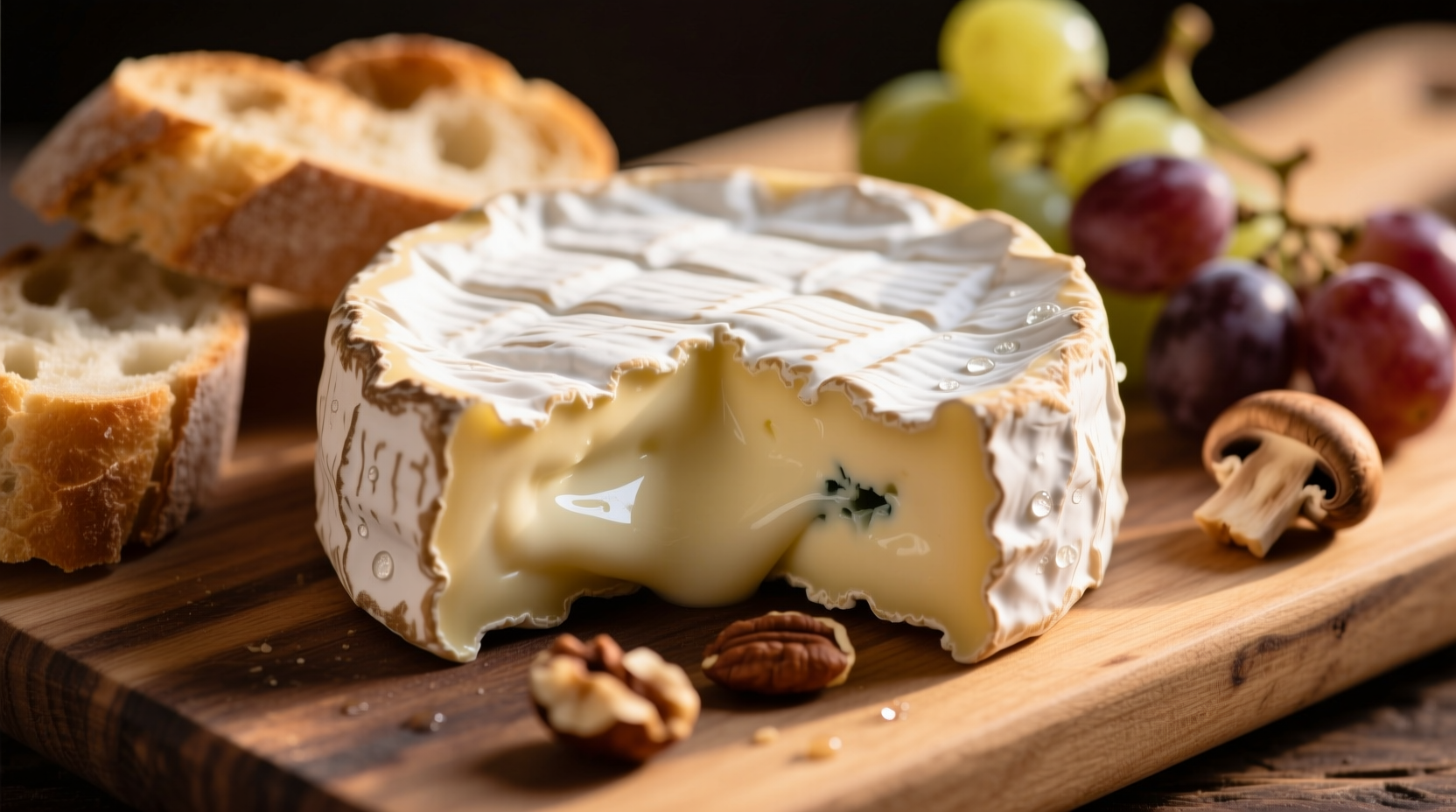Ever sliced into a wheel of brie and wondered what makes this French classic so beloved by cheese enthusiasts worldwide? Understanding brie's distinctive flavor profile helps you appreciate why it's been celebrated since the Middle Ages. This soft-ripened cheese delivers a sophisticated taste experience that balances richness with delicate nuances.
Breaking Down Brie's Flavor Components
When you take your first bite of quality brie, several flavor elements work in harmony:
- Creamy butteriness - The dominant characteristic from its high butterfat content (typically 45-50%)
- Earthy undertones - Subtle mushroom and forest floor notes from the white mold rind (Penicillium candidum)
- Mild tanginess - A pleasant acidity that balances the richness
- Nutty hints - Especially in properly aged varieties, reminiscent of fresh hazelnuts
- Grassy finish - Particularly in farmhouse varieties reflecting the cows' pasture diet
Texture plays an equally important role in brie's sensory experience. At perfect ripeness, it should yield softly under gentle pressure with an interior that flows like thick custard. The edible rind contributes complexity without overwhelming bitterness when properly matured.
Brie Aging Timeline: How Time Transforms Flavor
Brie's taste evolves significantly as it matures. Understanding this progression helps you select the perfect stage for your palate:
| Aging Stage | Texture | Flavor Profile | Best For |
|---|---|---|---|
| Young (2-3 weeks) | Firm, chalky center | Mild, milky, slightly sour | Cooking, milder palates |
| Optimally Ripe (4-5 weeks) | Creamy throughout, slight springiness | Buttery, mushroom notes, balanced tang | Most applications, cheese boards |
| Overripe (6+ weeks) | Very soft, liquid center | Strong ammonia notes, pungent, complex | Experienced tasters, cooking |
This aging progression comes from research by the American Cheese Society, which documents how enzymatic breakdown of fats and proteins creates increasingly complex flavor compounds as brie matures.
Brie vs. Similar Cheeses: Understanding the Differences
Many confuse brie with other soft cheeses, but distinctive characteristics set it apart:
- Brie vs. Camembert: While both use similar production methods, traditional brie de Meaux (from Île-de-France) has a milder, creamier profile than camembert de Normandie, which features more pronounced mushroom and barnyard notes due to different bacterial cultures and aging environments.
- Brie vs. Triple Crème: Triple crème cheeses like Brillat-Savarin contain additional cream, resulting in richer, less complex flavors with higher fat content (75% vs brie's 45-50%).
- Brie vs. Blue Cheese: Unlike blue cheeses with their sharp, salty, pungent profiles from Penicillium roqueforti mold, brie offers gentle earthiness without strong ammonia or saltiness when properly ripened.
Factors That Influence Brie's Taste Experience
Several elements affect how brie tastes beyond its basic composition:
Temperature Matters Most
Serving brie straight from the refrigerator masks its delicate flavors. For optimal tasting experience, remove brie from refrigeration 1-2 hours before serving to reach 65-70°F (18-21°C). This allows the fats to soften properly, releasing aromatic compounds that remain locked when cold.
Milk Source Differences
Traditional French brie made from raw cow's milk (brie de Meaux AOC) offers more complex terroir-driven flavors compared to pasteurized versions. Some artisan producers create goat's milk brie with tangier, brighter flavor profiles that appeal to those who find cow's milk varieties too mild.
Regional Production Variations
According to European Union Protected Designation of Origin standards, authentic brie de Meaux must come from specific regions near Paris and follow traditional production methods. American "brie-style" cheeses often lack the nuanced complexity of French counterparts due to different aging environments and bacterial cultures.

How to Serve Brie for Maximum Flavor Enjoyment
Enhance your brie tasting experience with these professional recommendations:
- Cutting technique: Slice triangular wedges from center outward to maintain structural integrity while serving
- Accompaniments: Pair with crisp baguette, honey, fresh figs, or toasted walnuts to complement rather than overwhelm its delicate flavor
- Beverage pairings: Try with Champagne, unoaked Chardonnay, or light-bodied Pinot Noir that won't overpower the cheese
- Temperature precision: Never serve below 60°F (15°C) - cold temperatures numb your taste buds to subtle flavors
Addressing Common Brie Taste Concerns
Many first-time tasters express concerns about certain aspects of brie's flavor:
The Ammonia Question
A slight ammonia scent indicates proper ripening as proteins break down, but it should never dominate the flavor. Strong ammonia taste typically means the cheese has passed its prime. According to cheese science research from Dairy Research Institute, ammonia levels peak around 5-6 weeks of aging then gradually dissipate when stored properly.
"It Tastes Like Nothing!" - Understanding Mildness
Compared to bold cheeses like aged cheddar or blue cheese, brie's appeal lies in its delicate balance. Its subtlety allows the nuances of terroir and craftsmanship to shine through. Try it after cleansing your palate with plain bread to better appreciate its layered flavors.
Your Complete Guide to Selecting and Enjoying Brie
Follow this simple checklist for the best brie experience:
- Check for proper ripeness: Gently press near the edge - it should yield slightly like a stress ball
- Examine the rind: Should be uniformly white with no yellowing or excessive dryness
- Smell before purchasing: Should have pleasant earthy aroma without strong ammonia scent
- Bring to room temperature: Essential for flavor development (1-2 hours)
- Start with small bites: Allow flavors to develop on your palate before adding accompaniments
Remember that brie continues to ripen after purchase. Store it in the refrigerator wrapped in parchment paper inside a loosely sealed container to maintain optimal humidity. Consume within 3-5 days of reaching peak ripeness for best flavor.











 浙公网安备
33010002000092号
浙公网安备
33010002000092号 浙B2-20120091-4
浙B2-20120091-4